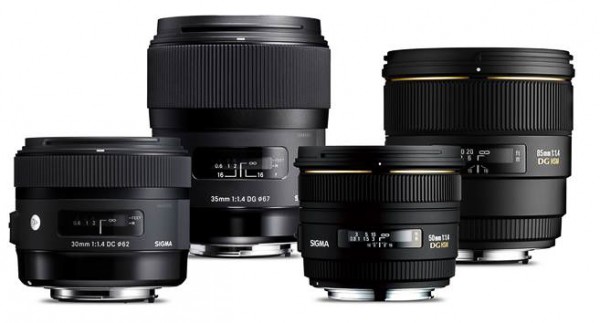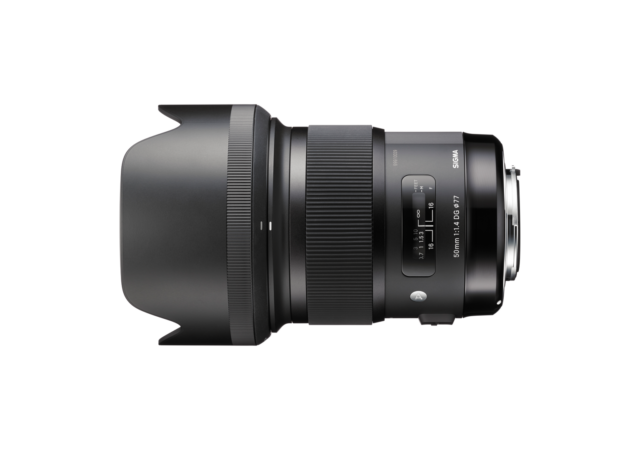Patrick Santucci and I had a few days to check out the first sample of the new 24mm F1.4 DG HSM | Art lens to arrive in the US, right before it was shipped off to WPPI for the big…
Introducing Sigma Vision magazine!
Welcome to the premiere issue of Sigma Vision, the new biannual magazine from Sigma Corporation of America, featuring inspiring imagery and great technical advice!
Taking Creative Control: Understanding Aperture and F/Stops
Of the three main variables relating to creative and artistic control on DSLR and compact interchangeable cameras–aperture, shutter speed and ISO– aperture control, is for many beginners, the most difficult to grasp. Have no fear, we’re here to help. Learning how and when to select a wide or narrow aperture unleashes the creative and expressive potential of your camera’s lenses.
SIGMA 50mm F1.4 EX DG HSM vs SIGMA 50mm F1.4 DG HSM | A
Adding either of these Sigma 50mm F1.4s camera lenses to your kit is a great idea. Is the Sigma 50mm F1.4 DG HSM | A or 50mm F1.4 EC DG HSM right for you?
First Look: Sigma 50mm F1.4 DG HSM | A
The Sigma 50mm F1.4 DG HSM | A lens is simply amazing. This standard field of view, fast-aperture, full-frame, prime lens combines outstanding sharpness, fast autofocus, in a lens that is built with a singular vision on performance.
Tips for Super-telephoto Zoom Lens Photography
Supertelephoto lenses can help bring a whole new level to your photography; and it just takes a little practice to get the hang of some of the particulars of working with long-reach lenses. Here are some top tips for making the most of supertelephoto zoom lenses.
Single-Shot Autofocus, or Continuous Autofocus, Or…
Learning how and when to use different settings and options for image capture is one of the most important parts of becoming a stronger photographer. There’s no setting or camera function that’s going to be perfect for all situations, while is exactly why there are so many options. For example, every DSLR offers a couple variations on Autofocus for either a Single-shot or Continuously tracking autofocus.
Each has it strengths and purposes, and even with that, there’s still times when switching the lens to manual focus is the best way to ensure that your chosen subject and focal point is sharp in the image. In this piece, we’re going to look at three photos of seagulls to briefly explore and explain the reasons why to choose one type of AF or manual focus over the others.
Chasing Fall Color with the Sigma 18-35mm F1.8 DC HSM | Art Lens
Exploring the world through the Sigma 18-35mm F1.8 DC HSM | Art lens on the hunt for varying colors and textures, and levels sharpness and blur can create images that are at once new, and yet instantly recognizable. Close-up focusing on a pumpkin, for example, gives a shallow slice of sharpness, and lovely focus fall-off in a composition that’s pure seasonal color. And a single turning leaf backlit by the sun tells the story of autumn in a very different way than a sweeping vista of an entire hillside.
The Sigma DP Merrill Series: Pixel Perfect Times Three
The question for photographers who demand the ultimate in image quality in a compact camera is simple.
Which DP Merrill camera do you choose: The new DP3 Merrill with its 50mm F2.8 Macro lens, the DP2 Merrill with its 30mm F2.8 or the DP1 Merrill with its 19mm F2.8 lens? Each of these luxe compact cameras is the perfect pairing of a fast prime lens, the Merrill Generation X3 Direct Image Sensor, and specially tuned image processing algorithms. And the images, of course, speak for themselves–both with incredible detail and sharpness, and in the big-camera feel to background blur when shooting with shallow depth of field.
First Look: SIGMA 35mm F1.4 DG HSM | Art Hands-On
Photographers have been excited about the possibilities of the new Sigma 35mm F1.4 DG HSM lens since it was announced at Photokina. The first of the Art line in the new Sigma Global Vision, this lens is finally here. And being one of the first photographers in North America to shoot with this lens, I can tell you, it is flat-out amazing.





